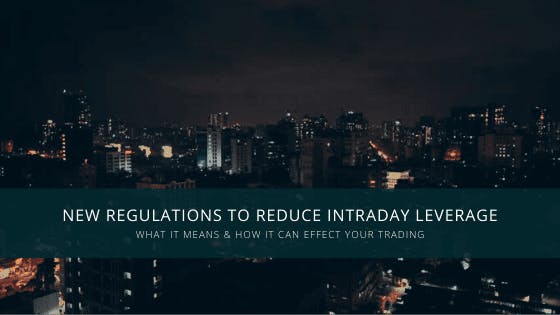
After the multiple wrongdoings and fraudulent incidents unfolded at various brokerages, capital market regulator -SEBI came up with many additional rules and mechanisms to curb the possibilities of financial fraud and incidents related to alleged misuse of funds and securities. Since a year, the full outgrowth of these frauds unfolded, there was ambiguity among the market participant especially, retail traders about the revision of exchange margin policies. Now, NSE and BSE have struck down the ambiguity through the latest circular on margin collection and reporting in the context of SEBI circular dated November 19th, 2019.
This move by SEBI to disallow stockbrokers from providing additional leverage for intraday trades is an arrow that aims at 2 points at the same time. The first is to safeguard the large chunk of retail investors in the stock market ecosystem who are unable to handle leverage effectively and secondly, to curb the misuse of clients funds. Currently, we are closely monitoring the development in margin collection and reporting mechanism and in touch with the exchanges for further implementation.
What has changed?
As per the exchange clarification on the margin collection, clients have to pay the entire upfront margin i.e. VaR margins + Extreme Loss Margin (ELM) for Equity and SPAN+Exposure in case of FNO to trade through any product code or order type. For currency derivatives, it is mandatory for clients to pay initial margin, net buy premium and extreme loss margins on an upfront basis.
For instance, if a TCS stock you would require to pay VaR + ELM (12.5% or 8x) to take trade using any order type. Therefore, maximum intraday leverage can be provided by the brokerages will be VaR+ELM (12.5% or 8x) irrespective of the order type. Prior to this many brokerages use to lure the customer with huge leverage while putting them on a huge risk. Going forward, Intraday product types like - Intraday, BO and CO will have uniform leverage as per the margin policy i.e. Var + ELM for Equity. Furthermore, for 1 lot of NIFTY futures, you need to pay the entire Span+Exposure margin (11.5%) around ₹ 1.04 lacs to trade using intraday orders like Intraday/BO/CO which earlier you traded with just ₹ 35k, therefore intraday leverage given by the brokerages to trade is going to become null and void.
According to circular, even selling of shares would require clients to deposit prior margin with the brokers and which was not the case so far but, if a client has a Demat and Trading Account with the same broker, margin for selling of the shares will not be required.
If brokerage fails to collect or client fails to pay requisite margin on an upfront basis or MTM losses by T+1 (for derivative) and T+2 (for equity and commodity segment) termed as a short reporting of margin collection and shall attract applicable penalty as mandated by Clearing Corporations. Due to a change in the margin reporting mechanism, no brokers will be able to offer any intraday leverage above the prescribed limit as practised earlier.
We think traders who were happy with additional intraday leverage to earn quick money, are the one who is going to be affected the most and they have to increase their trading capital in order to trade with new margin policies. We all understand that this policy has come up with its own pros and cons, while this new policy on margin will probably have a negative impact on our business and the entire brokerage industry as the volume may dry up to some extent and our revenues may be hit. Also, this will most likely lead to an increase in the impact cost/slippages. The increase in the margin requirement for the Intraday option selling/expiry trading may end the craze of weekly options and traders may be forced to move to monthly options in stocks and indices.
New margin requirements can hamper the interest of traders trading with big money like proprietary traders or HNIs as well. For instance, A trader with an intraday trading capital of 1 crore can only able to short approx 100 lots of Bank Nifty. If we assume that he receives the option premium of around ₹10/lot on expiry day, i.e he will receive ₹20k (10*20*100) as a total premium which is just 0.2% return. This will hit the profitability of options sellers to a great extent.
Although, we hope in the long term it will benefit the stock market ecosystem. It may also help retail traders to adopt a disciplined approach and might indirectly control the speculative activities in the market. We have seen that over-leveraged position can easily blow up the clients trading capital. Adequately leveraged system and positions will positively make trading clean and one relying on the highly leveraged brokerages may need to go back to the trading basics. We hope this regulation will help prevent such scenarios and increase market participation in a more sustained manner.
With regard to the implementation of the margin collection and reporting policy, we are in touch with the concerned officials and industry veterans to get more clarity on this. At this moment, the brokerages are incertitude and we are waiting for exchange clarification on this matter. Until then, margins will be provided as per the existing margin policy, check out our Margin Calculator for more information. We are tracing the developments in this regard and we will keep you posted.


